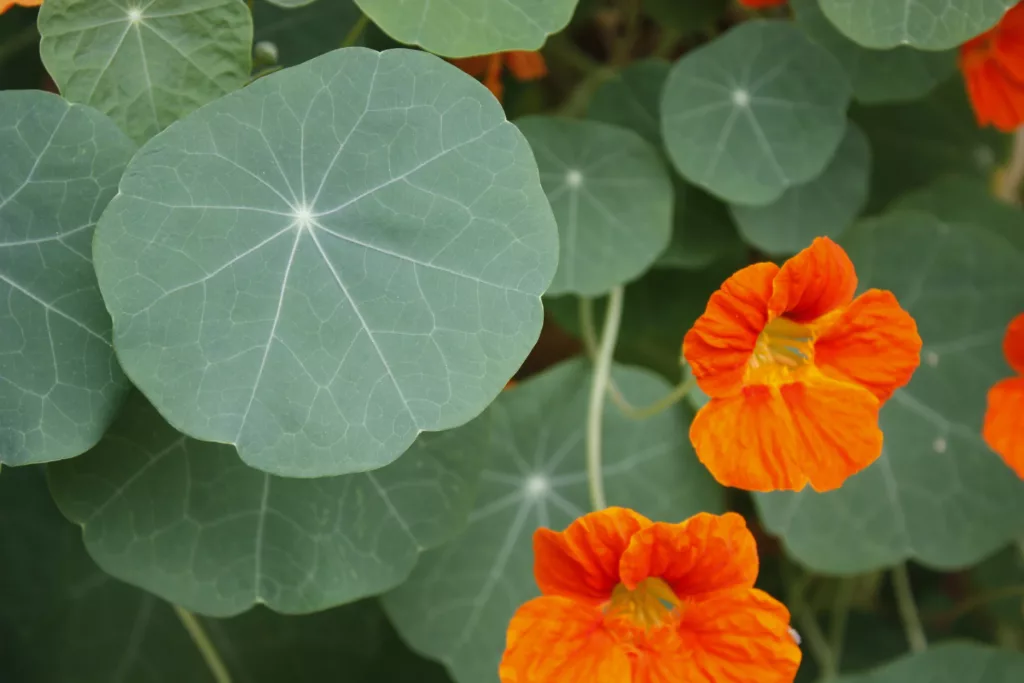Nasturtium is an amazing plant to include in your garden. It is a vigorous grower, easy to maintain, looks beautiful and is completely edible! In this article you will learning everything you need to successfully grow nasturtium, including ways to eat it.
A Quick Summary
Nasturtium is often grown as a trap crop, meant to distract pests from other plants. In our experience, nasturtium has never trapped a thing! But that doesn’t make it not worth growing. Nasturtium can handle cool weather, making it an early plant to start, it’s entirely edible, and comes in multiple colours
Disclaimer: Our website is reader-supported. Some links may lead to affiliate websites that help support the work we do.
Varieties
A few years back, nasturtium was just gaining popularity. At the time there were not many varieties available on the market, however, slowly more varieties have been coming out, and we are so here for it! The most common variety is the yellow and orange Jewel mix, but new options have come out like variegated varieties such as Tip Top Alaska, dark leaf varieties like Baby Rose, and dark blooms such as Black Velvet.
Sun Requirements
Nasturtium is a very low maintenance plant. It can handle different levels of light from part sun to full sun, however the more hours of light they receive, the better they will bloom.
Soil Preferences
Nasturtium is not too picky with the soil quality it grows in, it will grow in garden soil but will also grow in poorer soils.
Join the newsletter to get more great advice straight to your inbox!
How to Plant Nasturtium Seeds

Nasturtium can handle cool temperatures around the 0°C mark which means you can plant seeds earlier in the spring. If the daytime temperatures are around 10°C, you can direct sow seeds.
Nasturtium seeds are quite hardy. We have sown seeds in the garden, and experienced two hard frosts where nights dropped to -10°C and the seeds still germinated after those temperatures!
The easiest way to grow nasturtiums is to direct sow the seeds directly in the garden. This saves space in your house and allows the rain to maintain your plants for you. However, if you wish to start them indoors, they can be started 2-3 weeks before your last frost.
Caring for Seedlings
If you planted seeds directly outdoors, make sure to keep the soil moist until the seeds have germinated, and then water every few days when the soil dries out.
If you are growing indoors, start your seeds 2-3 weeks before your last frost. Plant the seeds in 2 inch pots, at a depth that is 2x the size of the seed. Keep the soil moist, but not too wet until the seeds germinate. Once the seeds have germinated, place them under grow lights.
Continue your garden learning:
- How to Control Squash Vine Borers
- How to Grow Zucchini from Seed to Harvest
- How to Protect Your Plants from Cucumber Beetles
- How to Grow Cucumbers From Seed to Harvest
- What the Calgary Water Main Break Can Teach Us In Our Gardens
Planting Guide

Nasturtium plants grow vines that like to either climb or crawl across the garden. Whether you are direct sowing, or planting seedlings out, you will want to plant them near a trellis, or on the edge of a raised garden, for it to spill over the garden bed.
If you are planting seedlings that were started indoors, make sure to harden them off, and then plant them out after all danger of frost has passed.
Watering
Water the plants regularly, however they are quite low maintenance and can handle a missed watering.
Harvesting

The fun part about nasturtium is that the plant is edible. The flowers, leaves, stems and even the seed pods are all edible. When harvesting, try not to harvest more than 1/3 of the plant at a time, however you can take what you need from the plant.
Note, when harvesting green seed pods, this means that you won’t be able to save seeds from the plant, so you will want to balance the two if you wish to harvest seed pods and also save seeds.
Ways to Enjoy Nasturtiums
There are quite a few ways you can enjoy nasturtiums! The first is making nasturtium chips (similar to kale chips), you can enjoy them fresh in salads, and another option is to pickle the green seed pods, similar to capers.
Join the family, get advice straight to your inbox!
Common Pests & Problems

Nasturtiums are most often planted as trap crops, meaning they are planted purely to be eaten by pests in order to distract them from higher value crops. However, in our experience, we’ve almost never seen a single pest on our nasturtiums! They are almost always pristine!
The insects or damage that we have seen on nasturtiums has been leaf miners, Japanese beetles, and sometimes cucumber beetles. However, overall we’ve only ever seen insects visit the flowers, but never damage the plant.
Saving Seeds

Saving seeds from nasturtiums is super simple, especially because the seeds are quite large. When the seeds are young they are green, and this is when you would harvest them to eat them. As they dry out they transition from green to yellow to brown. The dried brown seeds often will fall off the plant so you may be harvesting them from the garden or ground around your plant, but otherwise you can harvest them directly off the plant. Either plant these seeds for a second round of plants, or store them in a cool, dry place for next season.
And that’s everything you need to successfully grow nasturtium!









